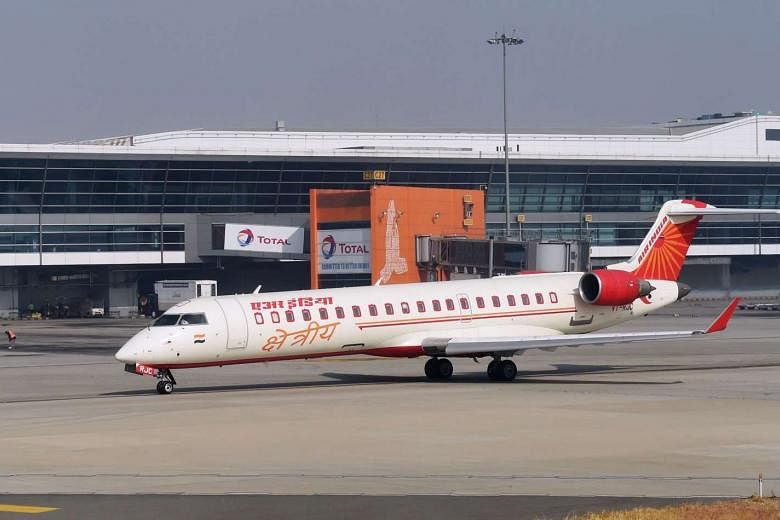NEW DELHI • New Delhi has announced a plan to make air travel affordable for millions more Indians, with schemes to revive ailing airports and connect rural areas it said would "take flying to the masses".
The long-awaited draft policy aims to bring down airfares to 2,500 Indian rupees (S$54) for an hour of flying on many regional routes through a slew of tax incentives, subsidies and a 2 per cent levy on international and some domestic routes.
It outlines plans to revive India's dilapidated airports and airstrips, of which only about 75 out of 476 are in use, build "no-frills" airports and set up a fund to improve access to rural areas.
"The Prime Minister has said... it should be a policy which takes flying to the masses, it should no longer confine flying only to the elite," Secretary for Civil Aviation Rajiv Nayan Choubey told reporters yesterday.
"We should promote regional connectivity in a manner which makes it possible for the ordinary middle-class Indian to start flying," Mr Choubey said, adding that the move would start next April.
"We will be giving several incentives in order to bring down the cost of flying as much as we can."
Although famous for its railways, India's patchy roads, vast distances and rising disposable incomes have led cheap flights to take off, with domestic air traffic more than trebling since 2005, according to the Sydney-based Centre for Asia-Pacific Aviation.
However, only 70 million of India's 1.2 billion citizens flew domestically in the year to March, making it one of the world's most under-penetrated markets.
The draft policy, which looks to overhaul rules dating back to the 1930s, has been submitted to aviation stakeholders for review.
The industry has criticised the government for failing to carry out aviation reforms. With the exception of budget carrier IndiGo, most domestic airlines are suffering losses and mired in debt.
The government is also considering scrapping or amending the "5-20 rule", which requires local airlines to operate for five years and have a fleet of at least 20 planes before they can fly internationally.
However, some Indian airlines are opposed to scrapping the rule, saying it would favour cash-rich international airlines coming into the domestic market.
India has spent more than US$50 million (S$70 million) since 2009 on eight airports that do not receive scheduled flights - white elephants that are a reminder of the pitfalls for Prime Minister Narendra Modi as he bets on an infrastructure drive to fuel growth.
One such example is the airport in Jaisalmer, a small and remote desert city in India's western Rajasthan state, which stands empty more than two years after the completion of a new terminal building.
India's main hubs, meanwhile, are bursting at the seams, slowing airlines' ability to expand in a vast country that is home to about one-sixth of the world's population.
The ghost terminals were built largely by the previous government, which had planned 200 "no- frills" airports, encouraged by rising air travel and the need to connect far-flung regions.
AGENCE FRANCE-PRESSE, REUTERS

